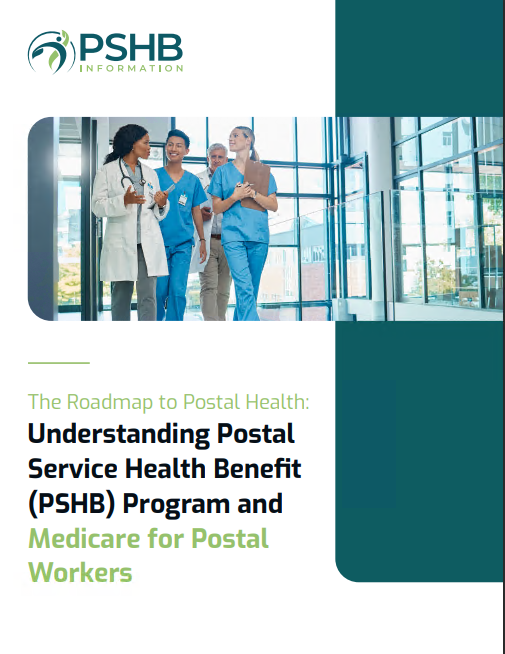Key Takeaways
-
The Postal Service Health Benefits (PSHB) system now exclusively supports USPS employees and retirees, offering tailored options that align with their unique needs.
-
By integrating Medicare Part B for eligible members, PSHB enhances coverage while reducing out-of-pocket expenses for many families.
A New Era of USPS Health Coverage
The Postal Service Health Benefits (PSHB) system officially replaces the Federal Employees Health Benefits (FEHB) system for USPS employees, annuitants, and their families in 2025. This change marks a significant milestone, with the program designed to better meet the unique healthcare needs of USPS families. Whether you’re an active employee or retired annuitant, understanding the PSHB’s features is crucial to making the most of your coverage.
Why the Transition Happened
USPS employees and retirees have distinct health coverage requirements. Unlike other federal employees under FEHB, USPS families benefit from a program tailored to their employment conditions. PSHB was introduced to address these differences, delivering a more streamlined system focused solely on the USPS community.
What Makes PSHB Different from FEHB?
PSHB differs from FEHB in several key ways:
-
Exclusive Access: PSHB plans are available only to USPS employees, annuitants, and their eligible family members.
-
Medicare Integration: For Medicare-eligible members, PSHB plans automatically coordinate with Medicare Part B, providing enhanced coverage and potential cost savings.
-
Tailored Benefits: PSHB prioritizes the needs of USPS families, offering plans that align with your unique circumstances.
Key Dates You Should Know
Here are the critical timelines for PSHB:
-
January 1, 2025: PSHB officially replaces FEHB. If you didn’t opt out during Open Season, you are automatically enrolled in a corresponding PSHB plan.
-
November 11 – December 13, 2024: The first PSHB Open Season allowed USPS employees and annuitants to select or switch plans for the 2025 coverage year.
-
Qualifying Life Events (QLEs): Changes to your plan can still occur outside Open Season if you experience a QLE, such as marriage or the birth of a child.
Exploring Your PSHB Options
One of PSHB’s main advantages is its variety of plan options. You’ll find plans that suit different family sizes, health needs, and financial situations. These plans include essential health benefits like preventive care, hospitalizations, and prescription drugs.
Medicare Part B Enrollment: What You Need to Know
If you’re a Medicare-eligible annuitant or family member, you’re required to enroll in Medicare Part B to maintain PSHB coverage. Here’s what this means for you:
-
Enrollment Benefits: By combining Medicare Part B with a PSHB plan, you gain access to enhanced benefits, including reduced deductibles and copayments.
-
Exceptions: Retirees who left service on or before January 1, 2025, or those aged 64 or older on this date, are not required to enroll in Part B.
Simplifying Prescription Costs
PSHB automatically includes Medicare Part D coverage for eligible members. This means lower out-of-pocket expenses for prescriptions, with additional savings available through new cost-spreading options that let you pay monthly for high-cost drugs.
Maximizing Your Coverage
To make the most of PSHB, it’s important to take full advantage of its offerings:
Understand Your Plan Benefits
Each PSHB plan includes a summary of benefits. Review it carefully to understand:
-
Coverage Details: What services are included, from preventive care to specialized treatments.
-
Cost Sharing: Your share of costs, such as premiums, copayments, and deductibles.
-
Network Providers: Ensure your preferred doctors and facilities are included in your plan’s network.
Leverage Preventive Services
Preventive care services, such as annual wellness exams and vaccinations, are typically covered at no extra cost under PSHB plans. These services are essential for maintaining your health and catching potential issues early.
Stay Informed About Changes
Every year, you’ll receive an Annual Notice of Change (ANOC) detailing updates to your plan’s coverage, premiums, and benefits. Pay attention to these updates to avoid surprises and ensure your plan continues to meet your needs.
Financial Advantages of PSHB
PSHB plans are designed to provide cost-effective healthcare solutions for USPS families. Here’s how:
Government Contributions
The federal government continues to cover a significant portion of your premiums, helping to keep costs manageable.
Out-of-Pocket Maximums
PSHB plans include caps on out-of-pocket expenses, giving you financial protection against high medical costs. For Medicare Part D enrollees, the $2,000 out-of-pocket drug cost cap provides substantial relief.
Part B Premium Reimbursements
Many PSHB plans offer reimbursements for Medicare Part B premiums, reducing the financial burden for eligible members.
What Happens if You Opt Out?
If you chose not to enroll in a PSHB plan during Open Season and do not have other qualifying coverage, you risk losing your health benefits. Make sure to confirm your enrollment status and verify coverage for all eligible family members.
Special Considerations for USPS Annuitants
Retired USPS employees have specific needs when it comes to health coverage. Under PSHB, annuitants enjoy several advantages:
-
Seamless Medicare Coordination: For those enrolled in Medicare, PSHB plans are designed to work hand-in-hand with Parts A and B.
-
Prescription Coverage: Automatic inclusion of Medicare Part D ensures continued access to affordable medications.
-
Flexible Payment Options: Spreading out-of-pocket drug costs over the year helps manage expenses more effectively.
Common Questions About PSHB
Can You Keep Your Current Doctors?
Most PSHB plans have extensive provider networks. Before enrolling, verify that your preferred healthcare providers are included to ensure continuity of care.
What if You Missed Open Season?
If you missed the 2024 Open Season, you can only make changes during a QLE or the next Open Season. It’s essential to mark these dates on your calendar.
How Are Family Members Covered?
PSHB plans cover eligible family members, including spouses and dependent children. Verify their enrollment during Open Season to avoid any gaps in coverage.
What Happens After Retirement?
Your PSHB coverage continues into retirement, provided you meet the eligibility requirements. Retirees who integrate Medicare Parts A and B with PSHB often experience enhanced benefits and lower out-of-pocket costs.
Navigating the First Year of PSHB
2025 is a pivotal year for PSHB, with all USPS families adjusting to the new system. To ease the transition:
-
Review Your Plan Early: Familiarize yourself with your new PSHB plan’s details as soon as possible.
-
Ask Questions: Use available resources, such as HR departments or plan-specific customer service lines, to address any concerns.
-
Monitor Your Healthcare Expenses: Keep track of costs to ensure your plan aligns with your financial expectations.
Final Thoughts on Navigating PSHB
Switching to the Postal Service Health Benefits system represents a significant shift for USPS families. By understanding its unique offerings, Medicare integration, and cost-saving features, you can make informed decisions that benefit your health and finances.






